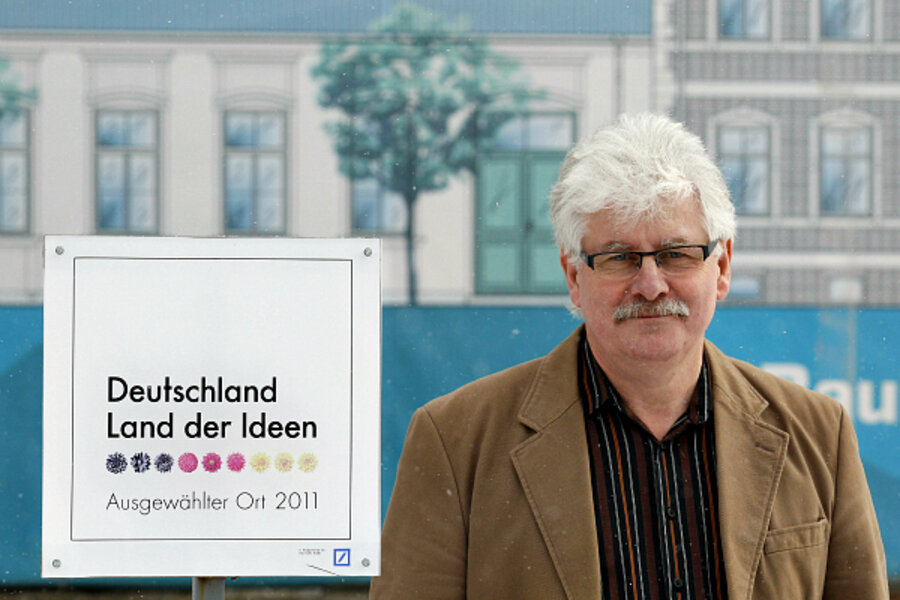German village offers a blueprint for green energy
| Feldheim, Germany
Nations as diverse as North Korea and the United States have sent delegations to visit a tiny village in former East Germany to see how it has transformed the way it uses energy.
A 60-minute drive south of Berlin, and home to about 125 people, Feldheim is Germany's first and only energy self-sufficient village and attracts both international energy experts and politicians.
"We're seen as pioneers, and the world wants to know whether they can duplicate our success," says Joachim Gebauer, a former teacher who guides visitors through the remote hamlet. "No coal or gas is burned here, it's all clean."
Instead, Feldheim is powered by a mix of 43 wind turbines, a woodchip-fired heating plant, and a biogas plant that uses cattle and pig slurry as well as maize silage.
Local energy costs of 16.6 euro cents per kilowatt hour (kWh) are just a little more than half of the 27 to 30 cents Germans pay on average, according to the New Energies Forum Feldheim, an information center.
Feldheim's rates are not far off those in Poland, which generates nearly all its electricity from carbon-intensive coal-fired plants.
Households there paid on average 14 cents per kWh in 2012, while those in the Czech Republic, which relies on nuclear for about a third of its power generation, paid about 15 cents per kWh.
The Feldheim project is just one small part of sweeping changes in energy across Germany aimed at moving away from coal and nuclear power.
The country of more than 80 million aims to derive 80 percent of its energy from renewable sources by 2050.
It has bolstered wind and solar energy generation, and following Japan's Fukushima disaster in 2011 Germany announced that it will phase out nuclear power by 2022.
Yet at an estimated cost of 550 billion euros ($709 billion) through 2050, Germany's energy transformation is an immensely costly challenge.
Last year alone German consumers paid an extra 17 billion euros for energy, including subsidies used to foster renewable energy generation.
Feldheim's low energy bills also reflect subsidies and other help.
To get started, all homeowners in Feldheim had to agree to pay 3,000 euros in connection fees for new power and gas lines, cutting their links to the regional grid provided by German utility E.ON.
The village then received 850,000 euros in European Union and government subsidies to help cover the 2.2-million-euro cost of new pipelines.
Local power firm Energiequelle agreed to install most of Feldheim's wind turbines and in return sells excess power they generate on the market.
The local agricultural cooperative helped by agreeing to use about 350 hectares (865 acres) of land to plant corn for the biogas plant.
Officials acknowledge all of this backing underscores why Feldheim may not be a model that works for large cities around the world, or even across the country.
"You can't do it the same way everywhere in Germany," German Environment Minister Peter Altmaier said during a visit here. "But I believe it can be a role model for many rural communities."
Feldheim is part of the small town of Treuenbrietzen, which was first mentioned in a historic document in the year 1208.
Tour guide Gebauer said that part of the project's success was rooted in a willingness among villagers to help each other out.
"In Feldheim, people stick together," says resident Peggy Kappert.
A handful of other communities around the world are also aiming for energy independence.
Abu Dhabi's Masdar City project, designed to be the world's first carbon-neutral, zero-waste city, is among the most prominent.
Yet its opening set for 2019 has been delayed until 2025, and officials have conceded it may need some help from external energy sources.
Charles Whall, a fund manager at asset manager Investec, says Germany's own 2050 renewables target was technically possible but could also prove difficult due to high costs and the need for back-up generation capacity to offset swings in renewable energy supply.
(Additional reporting by Michael Kahn in Prague; editing by Jason Neely)






